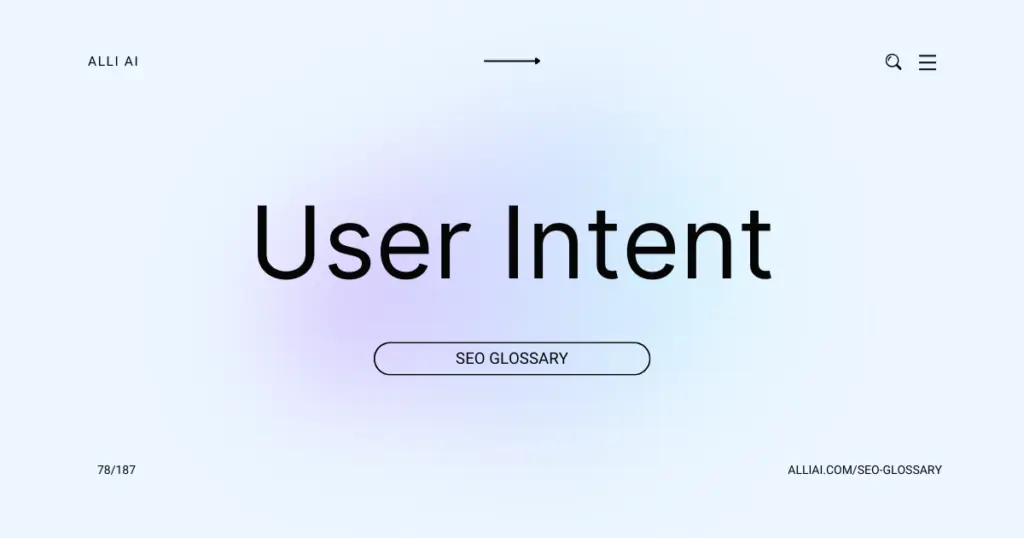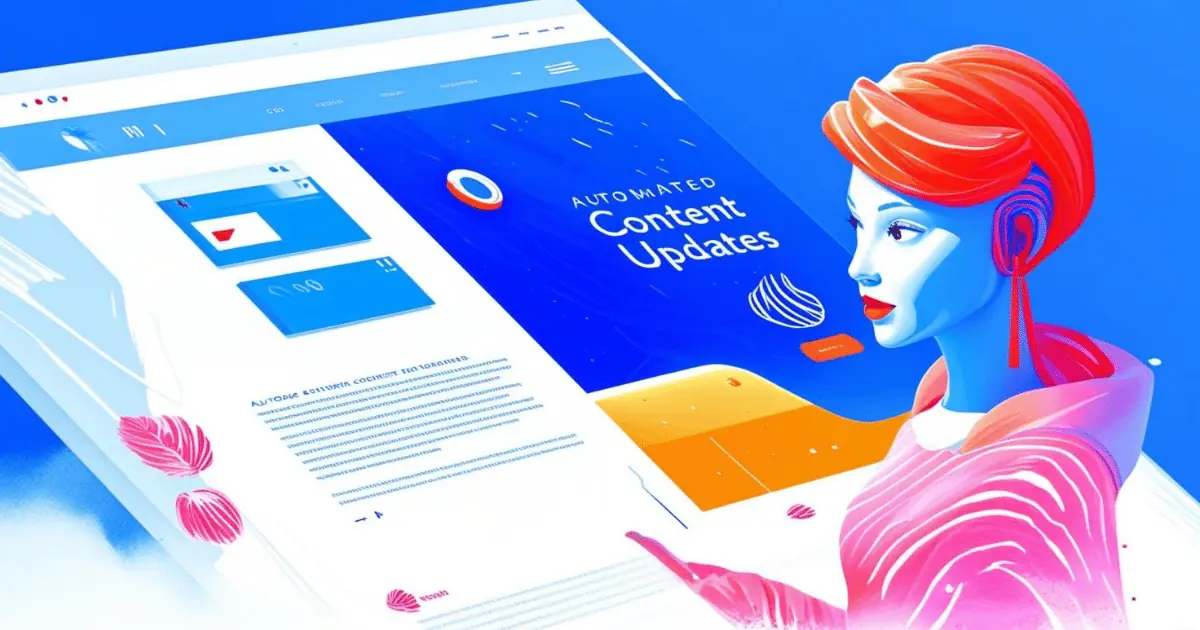What Does User Intent Mean?
User intent refers to the purpose or goal that a person has in mind when typing a query into a search engine. It is what the user is looking for or aiming to achieve with their search, such as finding information, making a purchase, or locating a specific website. Understanding user intent helps create content that directly answers the needs or questions of users, thereby improving search engine optimization (SEO).
Where Does User Intent Fit Into The Broader SEO Landscape?
User intent is pivotal in the broader SEO landscape as it directly influences how search engines rank websites. This concept is integrated into keyword research, content creation, and overall search engine algorithms. Understanding and aligning content with user intent ensures that web pages meet the specific needs or tasks that users wish to accomplish when they type a query into a search engine. This alignment increases the likelihood of a webpage appearing higher in search results, as search engines aim to provide the most relevant and useful information to users based on the perceived intent behind their searches.
There are typically three main types of user intent:
1. Informational Intent: Users seeking information. Content tailored to these queries often includes informative articles, guides, and posts.
2. Navigational Intent: Users looking for a specific website or page. SEO for these terms often involves ensuring proper brand visibility and accurate site structure.
3. Transactional Intent: Users intending to make a purchase or complete another type of transaction. Optimizing for these queries involves creating persuasive and clear product descriptions, showcasing reviews, and optimizing the checkout process.
Search engine algorithms prioritize content that best matches user intent, as evidenced by Google’s frequent updates aiming to better understand and classify the nuances of user queries. Websites that effectively address the right type of user intent are more likely to perform well in SERPs (Search Engine Results Pages), leading to increased organic traffic, improved user engagement, and higher conversion rates. SEO strategies must continually evolve to keep pace with changes in how search engines interpret and prioritize user intent.
Real Life Analogies or Metaphors to Explain User Intent
1. User intent is like fishing: Just as a fisherman chooses different bait depending on the type of fish he wants to catch, a website must present content that matches what the user is searching for. Baiting with the wrong type of content will not catch the desired user.
2. User intent is like a restaurant menu: Imagine if you walked into a pizza place but on the menu, they only had sushi. The mismatch between your dining intent (expectation of pizza) and the menu offering (actual sushi) results in a poor dining experience. Similarly, if a website’s content doesn’t match what the user is searching for, it leads to dissatisfaction.
3. User intent is like a librarian’s recommendation: When you ask a librarian for a book on gardening and they hand you a novel instead, it misses the mark because your intent was to learn about gardening, not to read fiction. Websites must similarly align their content with the specific requests or queries of their visitors.
4. User intent is like shopping for shoes: If you visit a store looking for running shoes and the salesperson keeps showing you formal wear, it’s unlikely you will be satisfied or make a purchase. A website should be similarly aligned with the ‘shopping list’ the user has in mind when they type a search query.
How the User Intent Functions or is Implemented?
1. Keyword Research: Identify the search terms used by the target audience, taking into account variations in phrasing, long-tail keywords, and semantic language that indicate specific intent.
2. Classification of Intent: Categorize user intent into primary groups, such as informational (seeking information), navigational (looking for a specific webpage or site), transactional (intending to make a purchase or complete an activity), and commercial investigation (comparing products or services before making a purchase).
3. Content Alignment: Develop content that aligns with the detected intent of the keywords. For example, provide detailed guides and articles for informational queries, and clear product information and purchasing options for transactional queries.
4. Page Optimization: Optimize web pages to cater to the user intent both in terms of content and SEO including meta tags, headers, and internal linking that reflects the intent identified.
5. SERP Analysis: Analyze search engine results pages (SERPs) to understand how different types of intents are served by current top-ranking pages.
6. User Engagement Metrics: Monitor metrics like bounce rates, time on site, and page views per visit to evaluate how well the content matches user intent and refine as needed.
7. Feedback Mechanisms: Implement tools like surveys, user feedback forms, or chatbot interactions to gather direct insights into whether users feel their needs are being met.
8. Search Algorithm Updates: Stay updated with the latest search engine algorithm changes, which often refine how they interpret and serve user intent.
9. Adaptive Content Strategy: Regularly update content strategy based on the evolving ways users search and interact online, and align with technological advancements like voice search and AI enhancements.
10. Testing and Iteration: Continuously test different page layouts, content formats, and calls-to-action to see which best align with the user’s intent and improve the overall user experience.
Impact User Intent has on SEO
User Intent affects SEO performance significantly as search engines aim to deliver results that closely match what users are seeking. When a website aligns its content and structure with user intent, it is more likely to rank higher in search results. For example, aligning content with transactional intent can drive more conversions, whereas understanding informational intent can increase website traffic. Additionally, alignment with user intent enhances user experience by reducing bounce rates and increasing engagement and time spent on the site. These metrics are positively seen by search engines and can further improve SEO rankings. Misalignment between content and user intent can lead to higher bounce rates and lower conversion rates, negatively impacting SEO performance.
SEO Best Practices For User Intent
1. Identify the primary user intent by researching common queries in your niche using tools like Google Keyword Planner, Ahrefs, or SEMrush.
2. Segment user intent into categories such as informational, navigational, transactional, or commercial investigation.
3. Create content that directly addresses the identified intent. For informational searches, write detailed how-to guides or tutorials. For transactional queries, include clear product information, pricing, and purchasing options.
4. Optimize on-page elements:
– Use target keywords naturally in the title tag, meta description, headers, and throughout the content.
– Ensure that the title tag and meta descriptions are compelling and accurately reflect the content.
5. Improve website structure to enhance user experience by:
– Organizing content logically using categories and tags.
– Implementing an easy-to-navigate menu.
– Ensuring your website is mobile-friendly and has fast loading times.
6. Utilize schema markup (structured data) to help search engines understand the context of your content, which can be particularly useful for voice searches and featured snippets.
7. Build internal links to guide users to related content on your site, hence increasing the dwell time and reducing the bounce rate.
8. Gather and incorporate user-generated content where appropriate, such as reviews and Q&A sections, particularly for transactional or commercial investigation intents.
9. Monitor performance using analytics tools like Google Analytics to track how users interact with your content and refine your strategy based on this data.
10. Continuously update the content to keep it relevant and accurate, which helps retain high rankings and meet user intent over time.
Common Mistakes To Avoid
1. Ignoring Long-Tail Keywords: Focusing only on high-volume keywords might mean missing out on specific, often lower-competition, long-tail keywords that precisely match user intent.
2. Overlooking User Intent in Content: Creating content that’s centered around keywords without aligning it with the user’s actual needs and the intent behind their searches often leads to high bounce rates and low conversion.
3. Mismatch between Content and Search Stage: Not considering where the user is in the buying/searching cycle (awareness, consideration, decision) when creating content can result in a mismatch that discourages user engagement.
4. Using Misleading Titles or Meta Descriptions: Titles and descriptions that don’t accurately reflect the content can frustrate users and increase bounce rates, negatively impacting SEO performance.
5. Neglecting SERP Features: Ignoring the opportunities to optimize for featured snippets, local pack listings, or other SERP features based on the user intent can result in lost traffic opportunities.
6. Not Updating Content: User intent can evolve over time; not updating content to reflect current trends, questions, or the language used around topics can make content stall in relevance and effectiveness.
7. Failing to Analyze Competitor Success: Not studying what competitors are doing right to align with user intent can leave gaps in your strategy, where competitors might meet user needs better and thus outrank you.
8. Over-Optimizing for Search Engines: Crafting content that is overly optimized for search engines with the right keywords but failing to actually address the queries or concerns of the user leads to poor user experience.
9. Ignoring Multi-Format Content: Failing to produce content in various formats (like videos, images, infographics) that match different user intents for the same keyword topic can limit engagement.
10. Not Considering Cultural or Regional Differences: Forgetting to account for variations in how different regions or cultures might search for the same topic can lead to less effective content and missed audiences.
To avoid these pitfalls, conduct thorough keyword research with an emphasis on intent, continuously update and adjust content strategy based on user feedback and SEO performance analytics, and focus on creating a user-centric experience on your website.






